On the sign:
[Emblem of Taormina]
[Emblem of Sicily]
IL TEATRO
[Illustration of the amphitheater]
In posizione dominante, occupa il crinale della collina omonima. Studi recenti hanno contribuito a risvegliare l’interesse su questo monumento, legato più al paesaggio che all’archeologia. Con | 109 m di diametro della cavea è, dopo quello di Siracusa, il teatro più grande non solo della Sicilia, ma della penisola italiana e dell’Africa. L’impianto originario risale come a Siracusa al III secolo a.C. A documentario sono i resti del muro a blocchi isodomi, inglobati nell’edificio della scena e tre sedili con iscrizione dalla cavea Alla stessa epoca risalgono gli avanzi del piccolo edificio sacro alla sommita della cavea, poi obliterati dall’allargamento che questa subi nel it d.C. Quanto è visibile appartiene interamente alla ristrutturazione romana, in particolar modo a quella avvenuta nelia prima metà del It d.C. sotto Traiano (CIL X 6996 con menzione del personaggio Paterna) o sotto Adriano. La pianta del teatro consiste in un edificio scenico rettangolare fiancheggiato da due ample sale di accesso all’orchestra e in una cavea, poco conservata, divisa in 9 settori da 8 scalette. Un doppio portico in laterizio con colonne di granito e copertura a volta sormonta la cavea, La scena, con pulpitum allineato con i muri di sostegno della cavea, conserva nel prospetto, un tempo decorato da statue e da una grande varietà di marmi e pietre colorate di importazione, le due qperture laterali o hospitalia, mentre è crollata quella centrale o regia. L’attuale ricostruzione della scaenae frons è dovuta ad un restauro ottocentesco. Generalmente restituito con due ordini di colonne sovrapposte, nel prospetto scenice sono riconoscibili due fasi: l’una arcuata di elá Traianea / Adrianea, l’altra rettilinea, di tipo orientale di età Severiana. Sono esigui, invece, i resti riconducibili ad eta augustea. la cui ristrutturazione sarebbe documentata soprattutto da un ritratto di Augusto. Alla stessa epoca risalirebbero alcune teste pertinenti a statue di magistrati e le belle teste di Nioblae e di Artemide appartenenti ad un gruppo statuario probabilmente pertinente alla decorazione del prospetto della scena (vedi esposizione Antiquarium). Tra illl III d.C. il teatro fu trasformata in un’arena con costruzione del corridoio anulare, chiuso da parapetto rialzato e dell’ ambiente sotterraneo, adibito a ricovero di attrezzature e forse anche di gabbie di animail. Ad una fase successiva sono, infine, riferibili l’allargamente dell’ambiente sotterraneo e l’attuale porticus post scaenam,
Regione Sicilia / Beniculturali
THE THEATRE
It occupies the ridge of the hill of the same name, in a dominating position overlooking the town. Recent studies have helped to revive interest in this monument. Its cavea (semicircular tiered seating) has a diameter of 109 m. It is, with the exception of that of Syracuse, the largest ancient theatre not only in Sicily, but in the Italian peninsula and North Africa. Its original plan is thought to date back to the 3rd century BC. This earliest phase is documented by the remains of a wall built of isodomic blocks, incorporated into the scaena and by stone seats with inscriptions from the cavea. To the same period belong the remains of a small shrine at the top of the cavea, later obliterated by the enlargement of the latter in the 2nd century AD.
What is visible of, the Theatre today belongs entirely to the Roman reconstruction, more particularly that completed under Trajan or Hadrian in the first half of the 2nd century AD. The high back wall of the stage (scaenae frons) preserves the two lateral doors or hospitalia, while the central one or regia has collapsed. The existing reconstruction of the scaenae frons is due to a nineteenth-century restoration. The remains datable to the Augustan period are scanty: that Augustus had the theatre rebuilt would seem to be testified. however, by a portrait of Augustus, by some heads belonging to statues of magistrates and by the magnificent heads of Niobe and Artemis (see exhibition at Antiquarium) belonging perhaps to a statue group forming part of the decorations of the scaenae frons. Between the 2nd and 3rd century AD the theatre was transformed into an arena. The enlargement of the underground rooms and the porticus post scaenam are datable to a subsequent period.
[Image]
Coberto Rive (Italian, active 1865-1890s) Taormina, Sicily: Theatre Interior with Mount Etna in Background Albumen Print Tampa Museum of Art 89.109.98
[Image]
Veduta del teatro di Taormina, gouache di J. Houel. 1778 ca. / View of the Theatre of Taormina, gouache of J. Houel, c.1778
Comune di Taormina

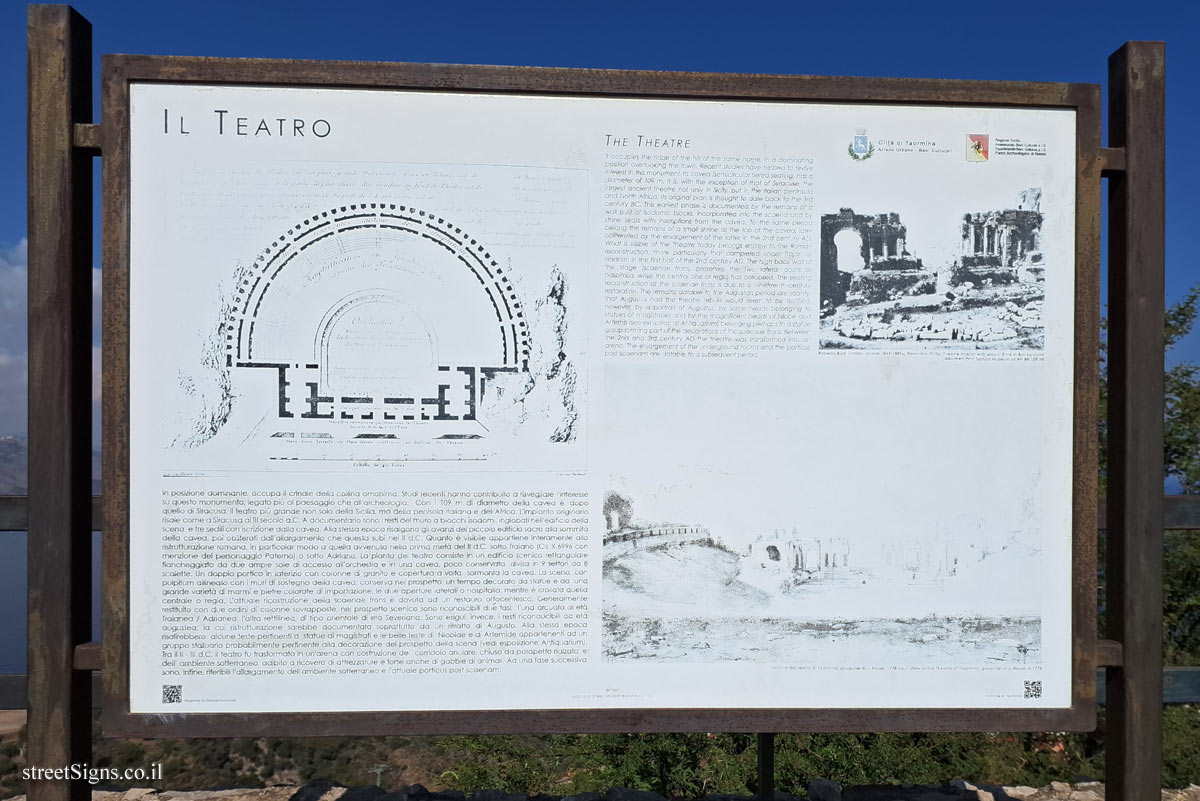
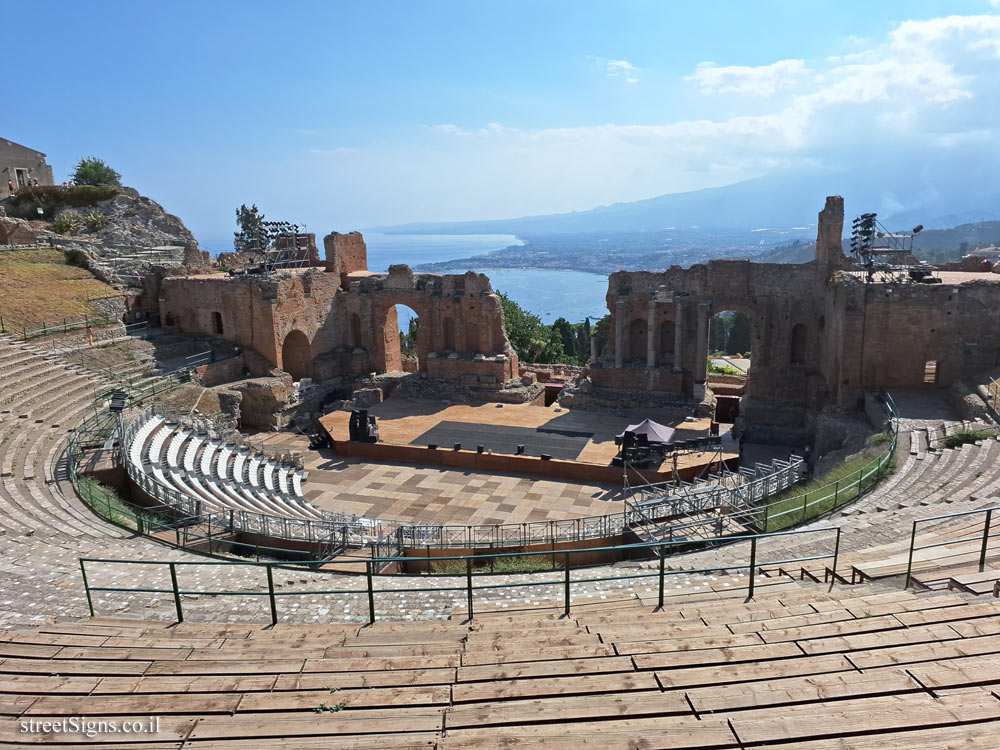
 Click for a larger image
Click for a larger image 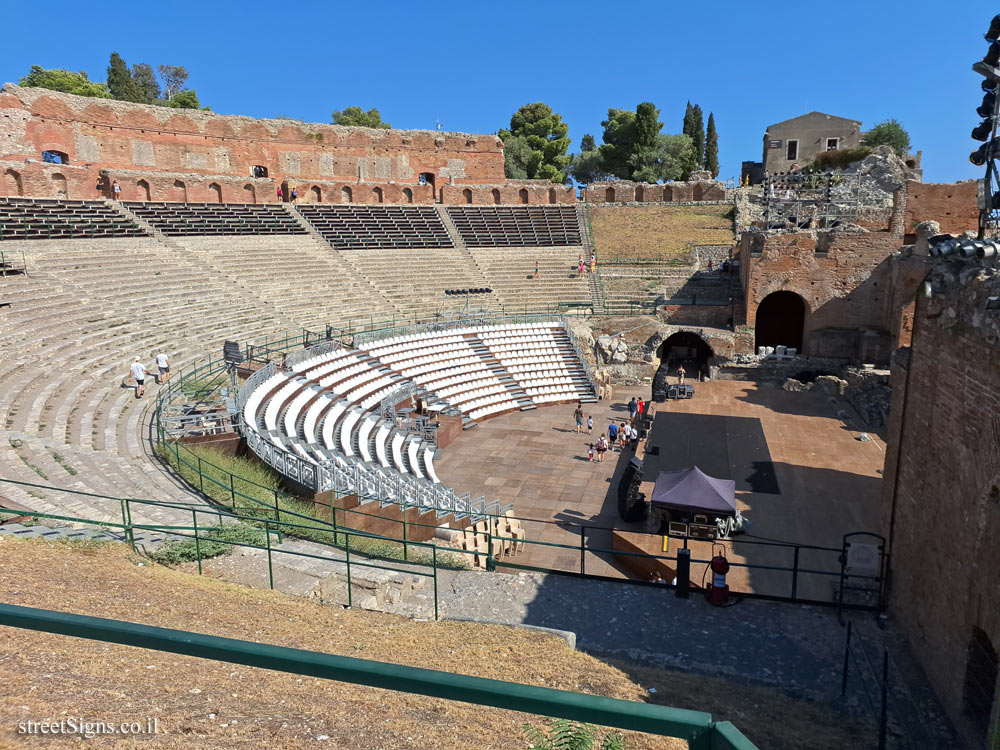 Click for a larger image
Click for a larger image 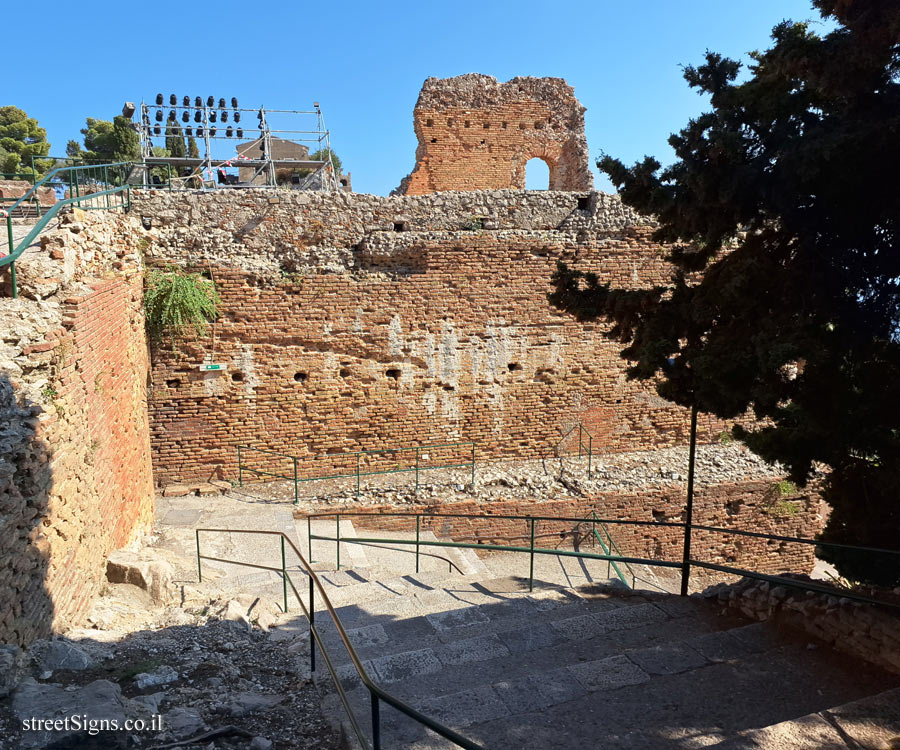 Click for a larger image
Click for a larger image 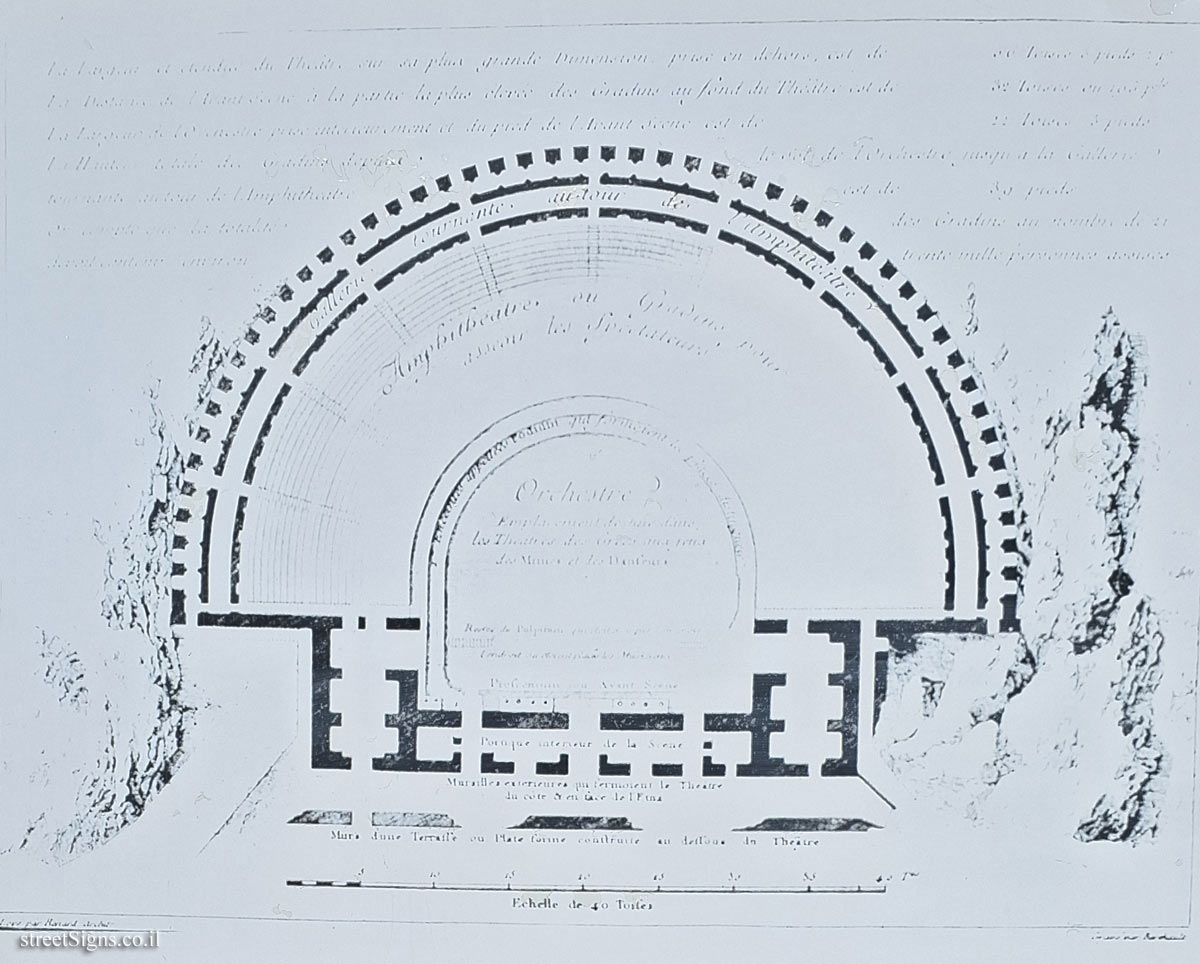 Click for a larger image - Illustration of the theater
Click for a larger image - Illustration of the theater 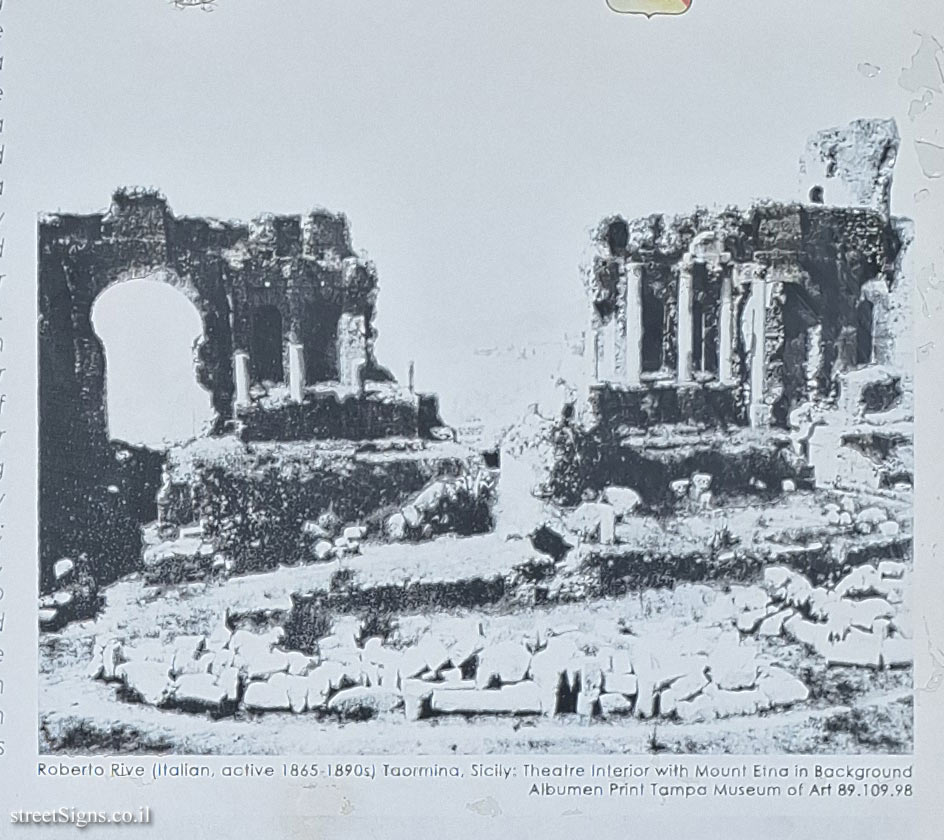 Click for a larger image - Photograph from the 19th century
Click for a larger image - Photograph from the 19th century 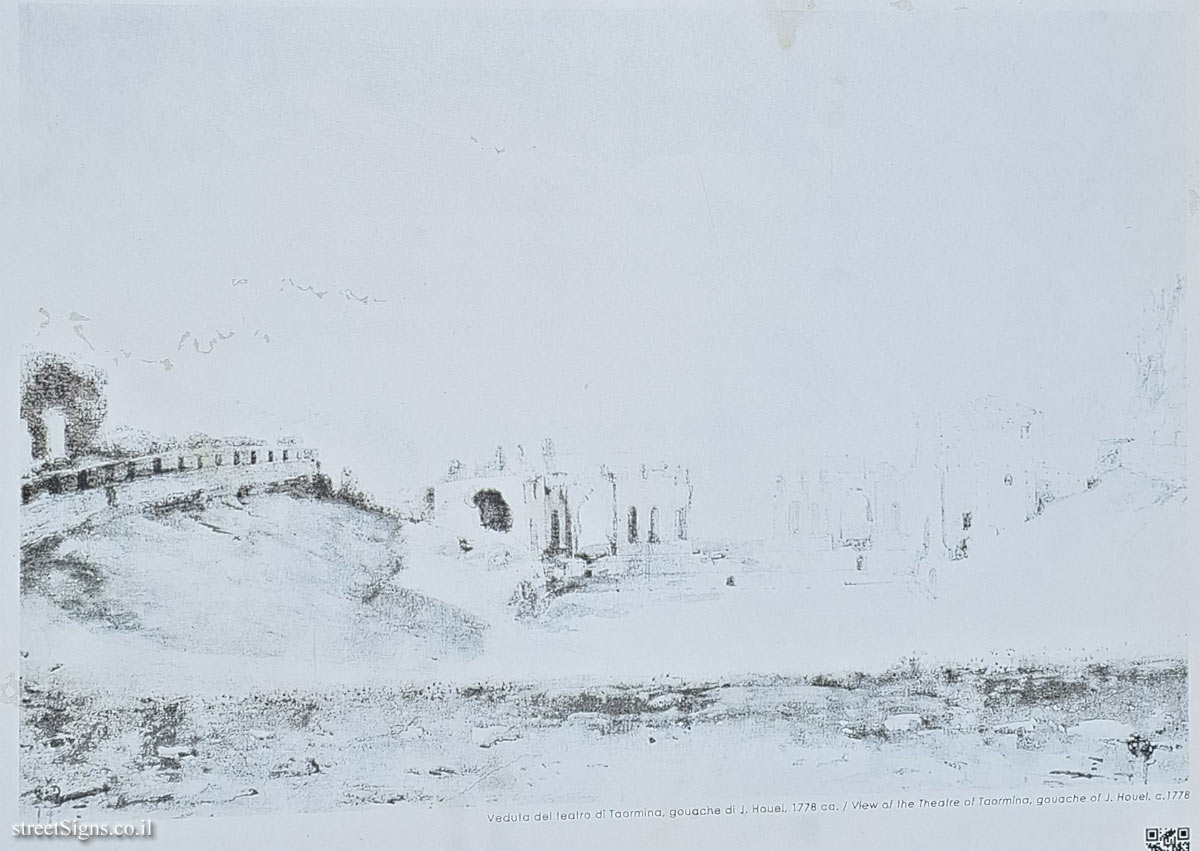 Click for a larger image - Illustration from the 18th century
Click for a larger image - Illustration from the 18th century